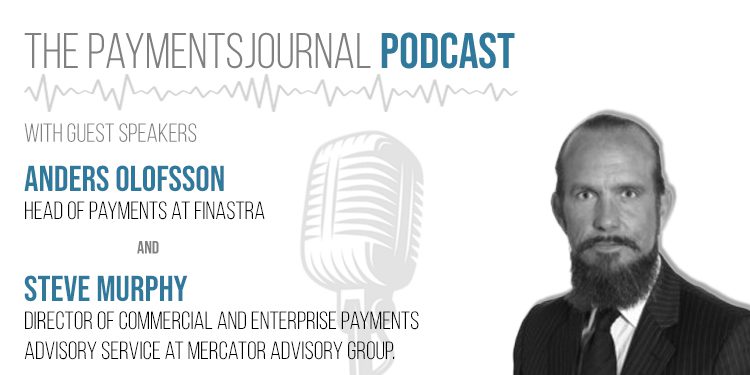The cross-border payments market is seeing an influx of new players that are bringing with them both new payment options and cross-border value-added services. To make the most of the partnerships these new companies offer, banks must rethink their own cross-border operating models.
To learn more about the state of the cross-border payment market and what banks need to know, PaymentsJournal sat down with Anders Olofsson, Head of Payments at Finastra, and Steve Murphy, Director of Commercial and Enterprise Payments Advisory Service at Mercator Advisory Group.
The new narrative around cross-border payments
In the 18 months since the pandemic emerged, there has been a tremendous increase in trade and international business. This includes a higher number of global transactions. The combination of this increase, rapid digitization, and new market entrants is creating what Olofsson refers to as the “perfect storm” in the cross-border payments space.
“In essence, we see a really big growth in the number of transactions and also in new currency corridors. Historically, [cross-border payments] have been dominated by Chinese, Japanese, European, and American trade; now we see as well that new currency corridors are opening up… These [are] providing new challenges for the traditional correspondent banking network, but also providing opportunity for new market entrants,” explained Olofsson.
While cross-border payments were once largely reserved for B2B use cases, that is slowly changing. “We’ve heard calls for better cross-border experiences from the Bank of International Settlements, working groups, and central bank figures and so forth, [and] that’s mostly on the consumer remittance side as well as our C2B use cases,” said Murphy.
There are also rising expectations that the seamless, integrated, and real-time experience of conducting payments in a commerce environment will become available on a corporate level. “We see the merger of the expectations and experience between retail and corporate payments, where [the expectations] are being shared across users,” said Olofsson.
Additionally, new players are entering the market with different fee structures than traditional correspondent bank networks, putting pressure on banks’ fee income. Combined with the decline of the global interest rate, this is compressing the profit margins for banks. As a result, banks today are looking into new ways to conduct cross-border transactions on behalf of their customers outside of SWIFT and traditional bank networks.
“There are so many factors playing into how banks need to be addressing the cost base to meet the compressed profit margins and fees in cross-border payments,” noted Olofsson.
Cross-border payments are conquering hurdles—and facing new ones
Historically, one of the key hurdles in cross-border payments was the lack of global standardization and harmonization within domestic payment systems. Now, systems such as SWIFT and NACHA in the United States and the ECB and EPA in Europe are consolidating into a standard format. This is good news, as the harmonization of a multitude of options makes processing international payments simpler.
“From a compatibility point of view, that has dramatically helped banks make their processing more efficient. We also see that the regulation globally for those networks is getting harmonized, and that is around everything from terrorist financing and prevention all the way to Know Your Customer,” said Olofsson.
Another hurdle has been around liquidity management, as it can be a processing challenge for banks to efficiently manage liquidity across many different settlement accounts in an increasingly real-time world. “The complexity and the challenges around managing your liquidity as a bank is a hurdle. That challenge also replicates back to the corporates, which also increasingly need to pay attention to their liquidity management in a speedier and speedier world,” he added.
Part of the hurdle here is the fact that a growing number of currencies are being used to facilitate cross-border payments. “The yen, the euro, and the U.S. dollar corridors [are] obviously being less of a problem, but there still remains close to 200 other currencies that need to be facilitated, and I think that’s where the complexity is with rising trade to the Southern Hemisphere of the globe,” noted Olofsson.
What the influx of new players means for bank operating models
Between increased digitization spawned by COVID-19, new market entrants and currency corridors, and the emergence of new technology, there is a lot going on in the cross-border payments space. But what does this mean for banks? “I think that, first and foremost, what should be driving the bank’s operating model is what business model they want to apply [to] their payment business,” said Olofsson.
More specifically, banks need to decide whether they are going to focus on conducting sales and distribution or manufacturing. By letting go of certain parts of the value chain, they can successfully achieve scale and efficiency in cross-border payments.
“Banks need to make that decision on how they are actually going to shape their business model. And when they decide upon that, they need to make the decision [of] whether they’re going to take an operation model where they focus on manufacturing [and] all that it comes with—achieving scale, efficiency, and really having a lean and mean back-office operation—or being able to serve clients more like a tech company,” concluded Olofsson.
